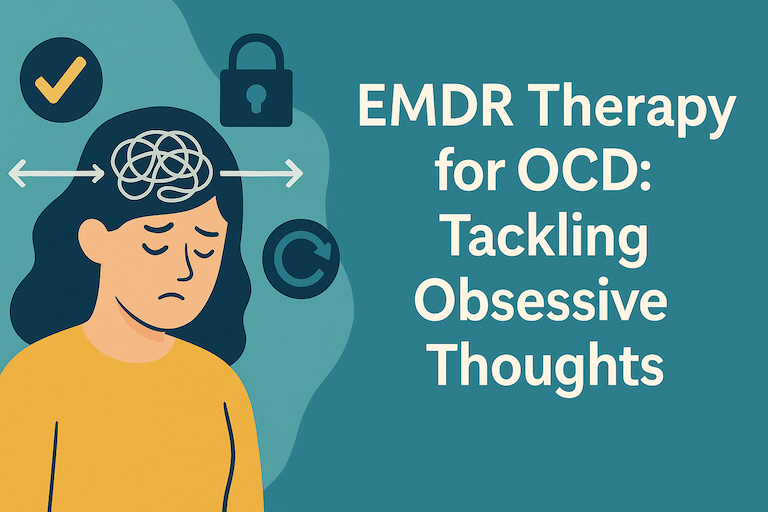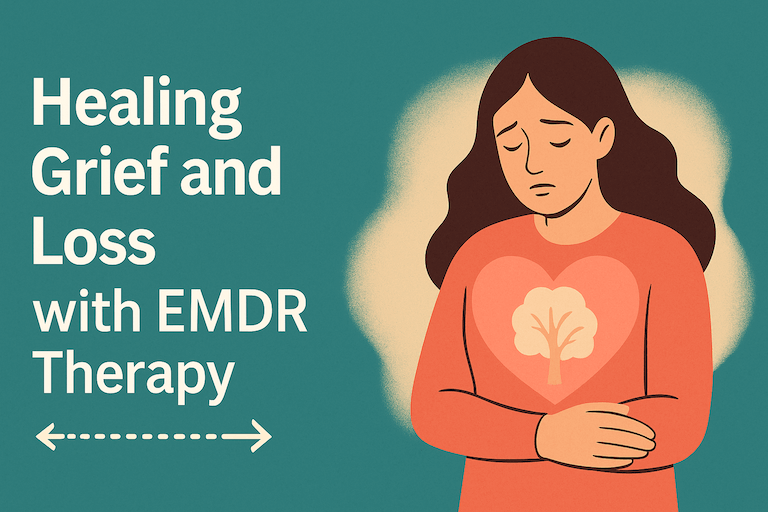Explore the eight core phases of emdr therapy for recovery
How EMDR Therapy Works: an In-depth Check Out the Process and Its Performance
EMDR therapy has actually arised as a popular treatment for trauma-related problems. Its organized technique consists of various stages made to assist in the handling of traumatic memories. Central to this approach is the idea of bilateral stimulation, which plays an essential role in exactly how memories are refined. Understanding these elements discloses much regarding the therapy's effectiveness. However, what specifically happens throughout an EMDR session, and exactly how does it influence the therapeutic journey?
Comprehending the Principles of EMDR Treatment
EMDR therapy, or Eye Activity Desensitization and Reprocessing, operates the premise that unsolved traumatic experiences can prevent emotional health. This innovative restorative technique aims to help with the processing of traumatic memories, enabling individuals to get a healthier point of view on their past. Central to EMDR is the concept of reciprocal stimulation, typically attained via assisted eye movements, which is believed to assist incorporate stressful memories into a more flexible framework.

The Eight Stages of EMDR Treatment
The procedure of EMDR therapy unfolds over 8 unique stages, each created to assist clients with a structured method to healing injury. The initial phase includes history-taking, where the specialist examines the customer's history and recognizes target memories. In the 2nd stage, clients find out leisure strategies to manage distress. The 3rd phase focuses on determining unfavorable ideas linked with the stressful memory.
The 4th phase is where the desensitization process begins, allowing clients to refine the terrible memory. The 5th stage involves installing favorable ideas to change the adverse ones. In the sixth stage, clients are guided to assess their psychological and physical reactions to the processed memory. The 7th phase emphasizes closure, assisting customers return to a state of stability. Finally, the eighth phase includes reevaluation, where therapists and customers review progression and attend to any kind of recurring distress. This comprehensive technique promotes a pathway to recovery and durability.
The Function of Bilateral Stimulation
Reciprocal excitement is a vital part of EMDR therapy, promoting the processing of terrible memories. This method involves alternating excitement of both hemispheres of the brain, typically accomplished via eye motions, acoustic tones, or tactile feelings. The purpose of reciprocal excitement is to engage the brain's all-natural details handling system, which might come to be disrupted adhering to trauma.
By triggering both sides of the brain, bilateral stimulation helps clients accessibility and recycle traumatic memories in an extra flexible way. This strategy motivates the integration of distressing experiences, decreasing their psychological charge and making it possible for clients to establish brand-new point see this of views.

In addition, bilateral stimulation might advertise leisure and minimize stress and anxiety during sessions, producing a safer environment for clients to confront painful memories. Ultimately, this technique enhances the restorative process, allowing individuals to relocate towards recovery and resolution.
Evidence Sustaining the Performance of EMDR
Research study has actually shown that EMDR therapy works in dealing with different emotional conditions, particularly post-traumatic anxiety disorder (PTSD) Countless research studies have actually shown significant decreases in PTSD signs and symptoms adhering to EMDR therapy. A meta-analysis of randomized regulated tests found that EMDR was as effective as cognitive behavioral therapy (CBT) for PTSD, with lasting effects observed even months after treatment. Additionally, the American Psychological Association and the World Health and wellness Organization endorse EMDR as an advised therapy for trauma-related problems.
Beyond PTSD, study shows that EMDR can likewise profit individuals experiencing anxiousness, depression, and anxieties. An expanding body of evidence supports its usage in diverse populations, consisting of professionals and kids - emdr therapy. Overall, the building up research emphasizes EMDR's potential as a flexible healing option, leading the way for further exploration into its mechanisms and applications in psychological health and wellness therapy
What to Expect During an EMDR Session
Throughout an EMDR session, customers can anticipate an organized yet flexible approach intended at handling stressful memories. The specialist starts by establishing a safe setting, where customers can really feel comfortable sharing their experiences. Initial conversations focus on identifying specific memories and associated negative ideas.
Clients are directed to Home Page concentrate on these memories while concurrently participating in bilateral excitement, generally via led eye motions or touching. This dual emphasis aims to promote the handling of the injury, enabling clients to reframe their experiences try here and lower emotional distress.
Throughout the session, specialists keep track of customers' feedbacks, adjusting the pace and method as required. Sessions may consist of relaxation methods or cognitive restructuring to reinforce favorable beliefs. Generally, clients can expect a supportive atmosphere that motivates self-exploration and healing, inevitably causing a better feeling of psychological well-being.
Regularly Asked Inquiries
Is EMDR Treatment Suitable for Kid or Adolescents?
EMDR therapy can be suitable for adolescents and children, provided it is adapted to their developmental needs (emdr therapy new york). Clinicians often change methods to guarantee safety and security and performance, sustaining younger populations in processing injury and psychological distress
For How Long Does EMDR Therapy Typically Last?
EMDR therapy commonly lasts between 8 to 12 sessions, with each session varying from 60 to 90 mins. Private needs and the intricacy of injury can influence the general duration of treatment.
Can EMDR Treatment Be Done From Another Location or Online?
EMDR treatment can undoubtedly be carried out from another location or online. Lots of professionals have adapted their techniques to virtual environments, allowing clients to take part in effective sessions from the comfort of their homes, keeping restorative advantages.
What Are the Possible Negative Effects of EMDR?
Prospective negative effects of EMDR therapy might consist of short-term psychological distress, heightened anxiety, vibrant memories, and physical pain. People might likewise experience tiredness or migraines following sessions, as the mind processes intense feelings and memories.
How Does EMDR Contrast to Typical Talk Therapy?

EMDR treatment, or Eye Activity Desensitization and Reprocessing, operates on the facility that unresolved terrible experiences can hinder emotional health. The process of EMDR treatment unfolds over eight distinct stages, each developed to direct customers through an organized method to recovery trauma. Reciprocal excitement is a vital component of EMDR treatment, facilitating the processing of distressing memories. During an EMDR session, clients can anticipate a structured yet flexible strategy aimed at handling distressing memories. Prospective side results of EMDR therapy might include momentary emotional distress, enhanced stress and anxiety, brilliant memories, and physical pain.